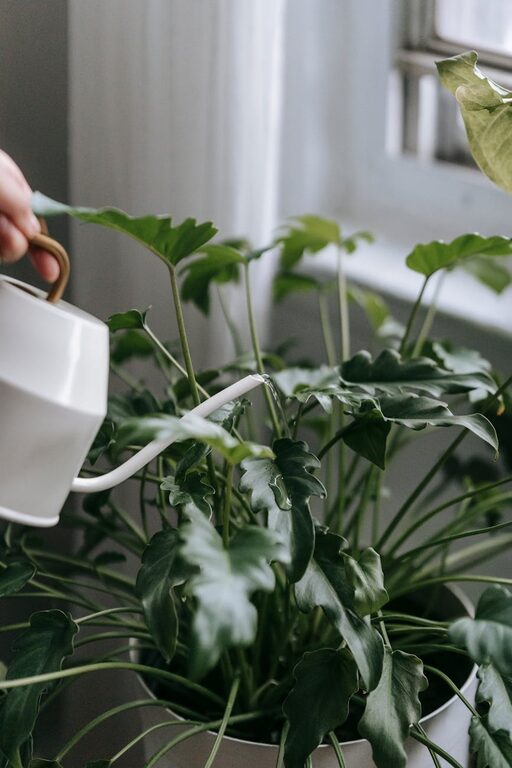Bringing houseplants into your home adds life, color, and freshness to any space. Whether you have a single succulent or a collection of leafy greens, keeping your plants healthy can be a rewarding and enjoyable part of your routine. This guide shares practical tips and essential knowledge to help you care for your houseplants, no matter your level of gardening experience.
Understanding Your Houseplants’ Needs
Different plants have different requirements. The first step to keeping your houseplants healthy is understanding the specific needs of each plant species you own. Common factors include light, water, temperature, and humidity.
Light: Find the Right Spot
Plants need light to photosynthesize and grow. However, the amount and type of light required varies widely:
– Bright light: Plants like succulents and cacti thrive near south-facing windows where they receive plenty of direct sunlight.
– Indirect light: Many houseplants, such as pothos and ferns, prefer bright but indirect light, often found near east- or west-facing windows.
– Low light: Some plants, like snake plants and ZZ plants, tolerate low-light conditions well, making them ideal for darker rooms or offices.
Observe where your plant is placed and adjust as needed. If leaves start yellowing or falling, your plant might be getting too much or too little light.
Water: Find the Right Balance
Water is crucial, but overwatering is a common cause of plant health problems. Here are some watering guidelines:
– Check the soil moisture before watering. Stick your finger about an inch deep into the soil; if it feels dry, it’s time to water.
– Use room temperature water to avoid shocking your plants.
– Ensure proper drainage by using pots with drainage holes and emptying excess water from saucers.
– Adjust watering frequency depending on the season — plants generally need less water in winter.
Temperature and Humidity: Replicate Natural Conditions
Most houseplants prefer temperatures between 65°F and 75°F (18°C to 24°C). Avoid placing plants near heating vents, radiators, or drafty windows.
Humidity also plays a role. Tropical plants such as ferns, orchids, and peace lilies enjoy higher humidity levels. You can increase moisture in the air by:
– Using a humidifier
– Grouping plants together
– Placing trays with water and pebbles near your plants
Choosing the Right Soil and Fertilizer
Healthy soil supports strong root growth and overall plant health.
Soil Mix
Select a potting mix suited to your plant type:
– Succulents and cacti: Use well-draining, sandy soil.
– Tropical plants: These prefer richer, moisture-retentive soil.
– Avoid using garden soil in pots as it can contain pests and does not drain well.
Fertilizer
Plants lose nutrients over time, so regular feeding helps them thrive.
– Use a balanced, water-soluble fertilizer during the growing season (usually spring and summer).
– Follow package instructions to avoid over-fertilization, which can harm plants.
– Many plants do not require fertilizer in their dormant period (fall and winter).
Routine Care and Maintenance Tips
Keeping your houseplants healthy is an ongoing process. Here are some practices that can make a significant difference:
– Pruning and removing dead leaves: This encourages new growth and helps prevent disease.
– Cleaning leaves: Dust can block light absorption; gently wipe leaves with a damp cloth.
– Repotting: When a plant outgrows its pot, moving it to a slightly larger container refreshes soil and gives roots more room.
– Watching for pests: Inspect plants regularly for signs of pests such as spider mites, aphids, or scale insects. Early detection helps keep infestations under control.
Troubleshooting Common Problems
Even with careful care, problems can arise. Here’s how to identify and address some common issues:
– Yellow leaves: Could signal overwatering, nutrient deficiency, or insufficient light.
– Wilting or drooping leaves: Often a sign of underwatering or root problems.
– Brown leaf tips: May indicate low humidity or salt buildup from fertilizers.
– Slow growth: Could be due to lack of nutrients, poor light, or root-bound conditions.
If you suspect pests, isolate the affected plant and treat it with insecticidal soap or neem oil.
Creating a Care Schedule
Consistency helps plants thrive. Create a simple care schedule that includes:
– Watering days tailored to each plant’s needs
– Monthly feeding during growing seasons
– Regular checks for pests and plant health
– Seasonal tasks like repotting and pruning
Conclusion
Keeping houseplants healthy requires attention, patience, and a bit of understanding for each plant’s unique needs. By providing appropriate light, water, soil, and care, you can enjoy lush, vibrant greenery in your home year-round. With these tips, your plants will not only survive but flourish, making your living space more inviting and refreshing.
Happy planting!

